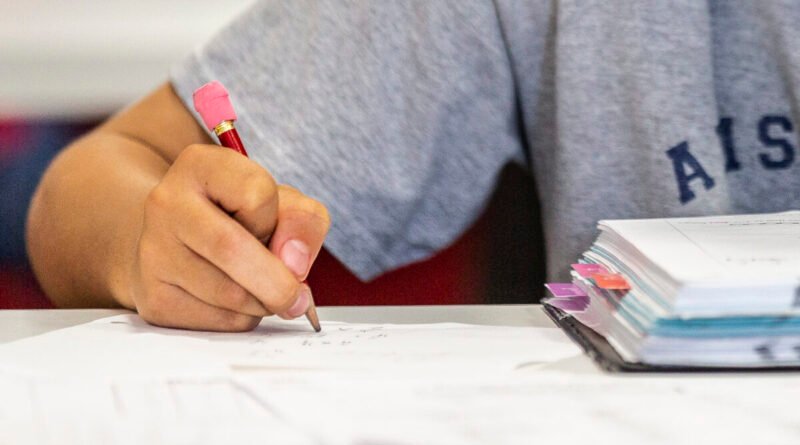US Public Schools’ Fast-Dissolving Education Standards
Distressed Patriotic Flag Unisex T-Shirt - Celebrate Comfort and Country $11.29 USD Get it here>>


Commentary
The state of New York has decided to lower what it calls “proficiency” standards in math and English-language arts for students in grades 3 through 8. The reason: a drastic drop in student scores on statewide tests from 2019 to 2022. In Schenectady alone, not one eighth-grader scored “proficient” on the statewide math test in 2022.
One reason for that: New York’s public school systems’ insistence, prompted by militant teachers’ unions, on closing down schools more or less continuously from March 2020 to September 2022 during prime COVID-19 hysteria. The students were supposed to be on remote learning, but it turned out that children, especially very young children, didn’t have the concentration to focus on screens for long periods of time—that is, when they or their parents even bothered to get screens in front of them. Closed schools during the pandemic led to a nationwide decline in standardized-test scores.
The reaction of the scoring committee to this catastrophe was to dub the dramatically lower 2022 scores as a “new normal,” and then use them for setting a substantially altered baseline for “proficiency.” New York’s education bureaucrats prefer to use the word “change” rather than “lower” when it comes to setting that baseline, but it’s clear that the standards that were operative in 2019 will be nowhere near that level in 2023. And “proficiency” isn’t a particularly demanding standard. It simply means that a student is performing at grade level: getting B’s and C’s, not necessarily A’s. But now “grade level” will mean something entirely different in New York.
It’s easy to blame the teachers’ unions and the craven state officials in monetary thrall to them. The Chicago school system, another territory that the teachers’ unions have staked out as their proprietary domain, remained mostly closed from March 2020 until late August 2022 as teachers battled to work from home instead of inside their classrooms. The upshot: 55 Chicago public schools with not a single student scoring proficient in math or reading.
But teachers’ unions can’t be blamed for the way Chicago’s education bureaucracy has chosen to handle these pandemic-related declines. First, Chicago Public Schools stopped holding back poorly performing elementary-school students to repeat a grade during the first two years of COVID-19 disruption. Now, the Chicago school system has permanently ended any use of test scores in determining promotions. Furthermore, even students who fail core courses via their teachers’ own grading systems would be promoted alongside their passing classmates if they agree to “intervention” from on-site tutors. The idea is that holding students back for any reason is “punitive,” as one researcher put it, and it also disproportionately affects black and Latino children.
All of this—whether it’s making social promotion the new norm or simply redefining what counts as “proficiency”—is part of a current trend of dealing with the fact that some students can’t meet educational standards by eliminating the standards themselves.
Virginia, for example, has already lowered proficiency standards on its statewide reading tests in reaction to the pandemic, the result being a significant “honesty gap” discrepancy in student performance on state and federal tests.
New Mexico has a lagging high-school graduation rate—so now there’s a bill in the New Mexico legislature that would water down graduation requirements by reducing the number of required classes and credits.
In California, Culver City High School recently eliminated honors English classes because too few black and Latino students were enrolling. Two years ago, school districts in Los Angeles, Sacramento, Oakland, and elsewhere began phasing out “D” and “F” grades and giving students who fail or fail to turn in their assignments indefinite extensions and “do overs” to finish their coursework.
This massive collapse of educational standards has been in the name of sparing young people the stigma of being labeled as failures. “[A] failed child needs more work not a failure grade,” one supporter of the policy commented on Twitter. Or in the name of racial “equity,” the insistence on equal outcomes for everyone regardless of ability or achievement. Anything else—honors classes, letter grades, requiring students to reach a certain level of subject-matter mastery before they can move on—smacks of “tracking,” now a dirty word in education circles.
For nearly a century, separating students into ability groups—average, above-average, and below-average—was the norm in U.S. education. Starting in the 1960s, it began to be abolished as racially discriminatory: too many minority and low-income children on the bottom tracks. More recently, school districts have jettisoned gifted and talented programs and sought to get rid of merit-based admissions to academically prestigious high schools such as San Francisco’s Lowell and New York’s Stuyvesant. The operating principle: If you can’t raise everyone to the top, you can push everyone to the bottom, with dumbed-down classes for all.
This hurts everyone, and not least the students of less-than-stellar academic talent. Students seem to learn best in classes targeted to their actual level of ability, where they can take pride in mastering what they’re capable of mastering. Not every student is a math whiz who can climb the rungs to pre-calculus, but large numbers of students can learn some basic algebra taught at the right pace, and where they won’t feel like failures in a roomful of high achievers. In turn, the high achievers won’t waste their time in slow-paced classrooms. If the goal of public education is, as its defenders assert, to help all students reach their potential, ability grouping targeted to individual students’ strengths and weaknesses can accomplish exactly that.
Right now, though, we seem sadly headed in the opposite direction. Prompted by the COVID panic-generated school closings that led to massive declines in student achievement, we seem determined to push those achievement levels even lower, if not dissolve them altogether via a wholesale abandonment of academic standards. Inevitably the taxpayers who fund the expensive U.S. public education system are going to wonder why they’re paying for their children to learn so little. And who could blame them?
Views expressed in this article are the opinions of the author and do not necessarily reflect the views of The Epoch Times.




